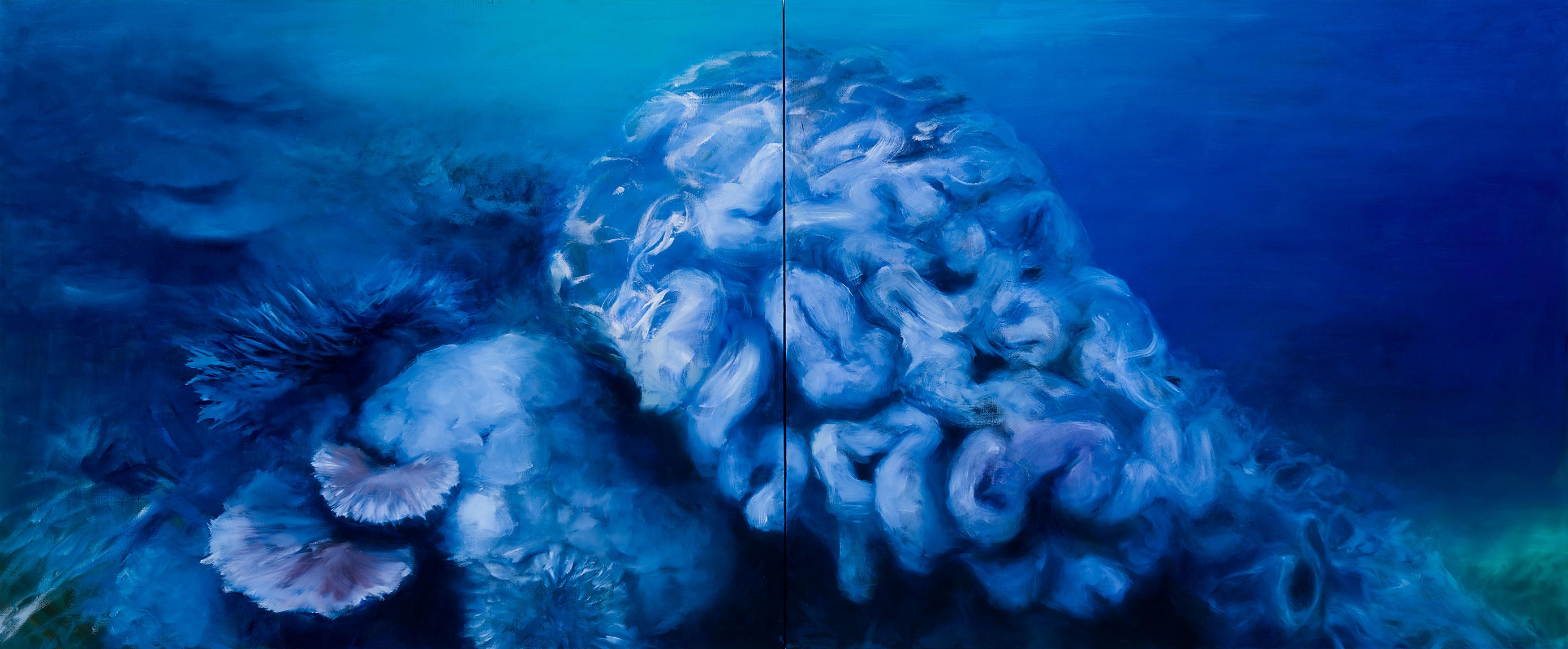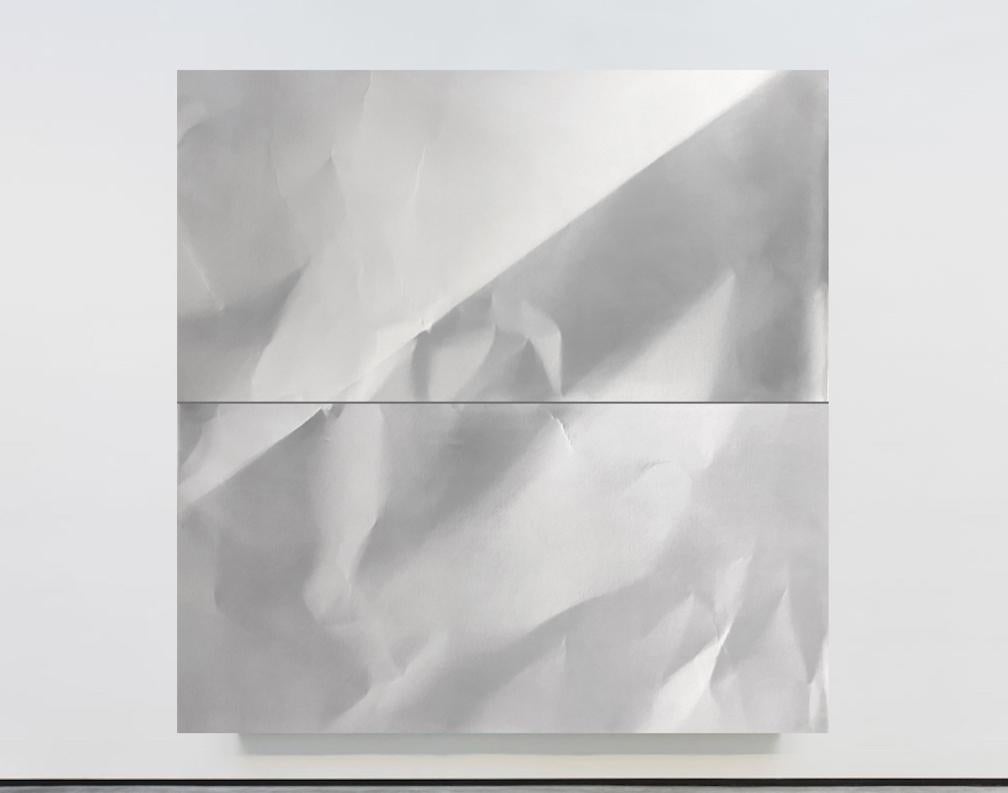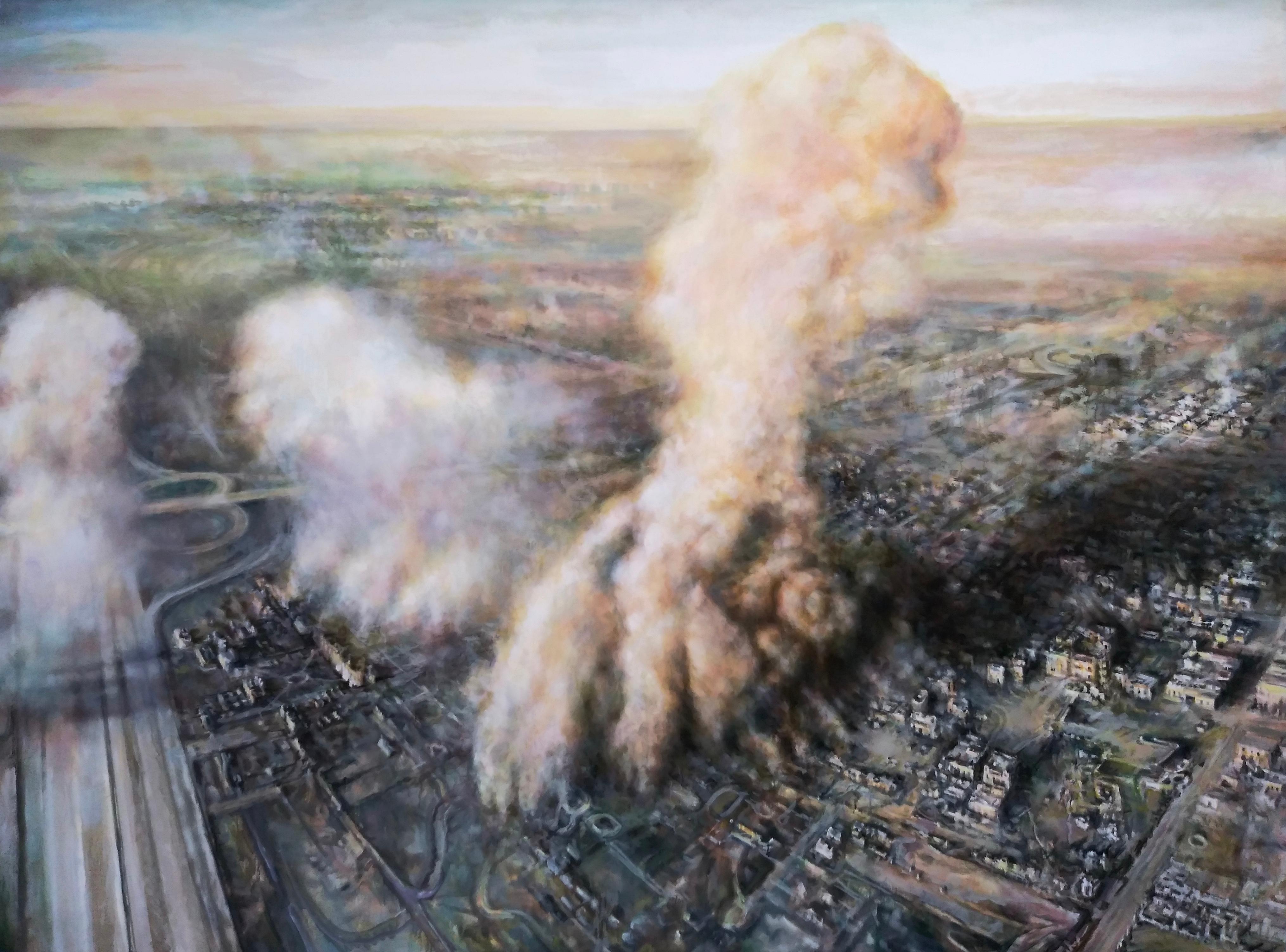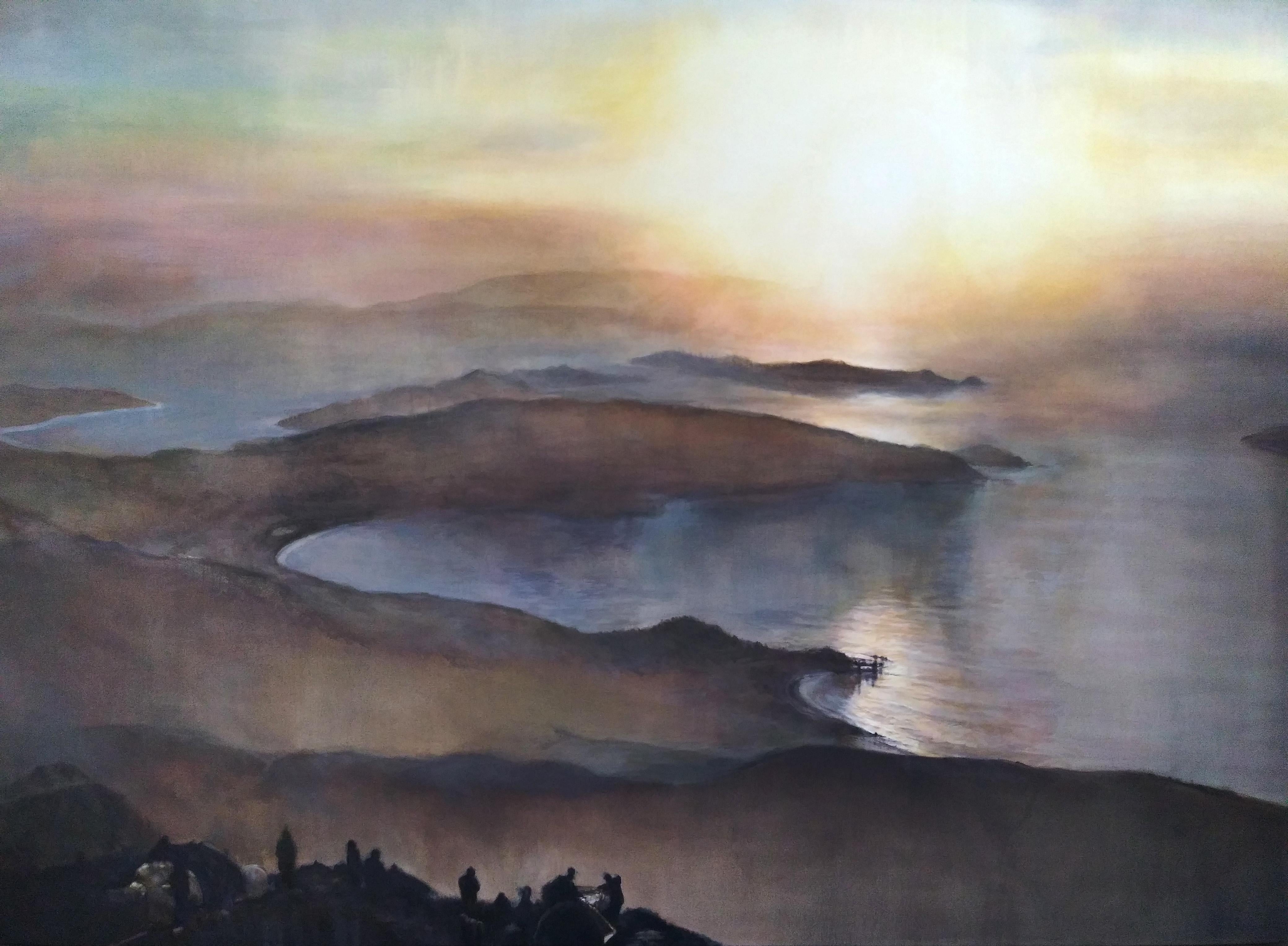Items Similar to Nashville at Sunrise
Want more images or videos?
Request additional images or videos from the seller
1 of 9
Louis Oscar GriffithNashville at Sunrisec. 1925
c. 1925
About the Item
Nashville at Sunrise
Oil on canvas, mounted to archival resin board
Signed by the artist lower left
Provenance: Estate of the artist
By decent
A gorgeous Indiana Impressionist oil painting, done "plein air" (on location, outdoors)
Born in Greencastle, Indiana, Griffith grew up in Dallas, Texas where Texas artist and teacher Charles Franklin Reaugh recognized young “Griff’s” artistic talent. At age 18, Griffith moved to St. Louis where he attended the St. Louis School of Fine Arts.
In 1895, he moved to Chicago where he worked making color prints for the firm Barnes and Crosby. He attended the Art Institute of Chicago and during a brief stay in New York, the National Academy of Design. A successful commercial artist with a studio in the Chicago Loop, Griffith was a member and president of the Chicago Palette and Chisel Club.
He made his first trip to Brown County, Indiana in 1908, intrigued by reports of beautiful scenery by other Chicago-area artists such as Adolph Shultz and woodblock print-maker Gustave Baumann.
Griffith’s first exhibition was in 1903 at the Art Institute of Chicago, which by 1824 exhibited more than 60 of his works. He showed almost 70 works at the annual Hoosier Salon Exhibition.
He won a bronze medal at the Panama-Pacific International Exposition in San Francisco in 1915; in 1921, he was a gold medalist at the Palette and Chisel Club; he won the Daughters of Indiana prize in 1925. The Chicago Society of Etchers recognized his works in 1949 and 1953; an oil, A Tranquil Afternoon, was awarded the Davis Wild Flower and Landscape prize in San Antonio, Texas.
The Smithsonian Institution in Washington mounted a special exhibit of Griffith’s prints in 1945. He also exhibited at the 1921 show of the Pennsylvania Academy of Fine Arts; the 1926 Sesquicentennial Exposition in Philadelphia; the 1927 second International Exhibition of Modern Engravings in Florence, Italy; the Canadian National Exposition; National Academy of Design in 1943; and the Library of Congress, also in 1943.
- Creator:Louis Oscar Griffith (1875-1956, American)
- Creation Year:c. 1925
- Dimensions:Height: 10.25 in (26.04 cm)Width: 13 in (33.02 cm)
- Medium:
- Period:
- Condition:
- Gallery Location:Fairlawn, OH
- Reference Number:
About the Seller
5.0
Recognized Seller
These prestigious sellers are industry leaders and represent the highest echelon for item quality and design.
Platinum Seller
These expertly vetted sellers are 1stDibs' most experienced sellers and are rated highest by our customers.
Established in 1978
1stDibs seller since 2013
716 sales on 1stDibs
Typical response time: 1 hour
Associations
International Fine Print Dealers Association
- ShippingRetrieving quote...Ships From: Fairlawn, OH
- Return PolicyA return for this item may be initiated within 10 days of delivery.
More From This SellerView All
- Blue Horizon (near Sante Fe, New Mexico)By Elmer Ladislaw NovotnyLocated in Fairlawn, OHBlue Horizon (Near Sante Fe, New Mexico) Signed by the artist lower right (see photo) Oil on board, 16 x 27 5/8 inches Condition: Very good. Housed in the or...Category
1970s Realist Paintings
MaterialsOil, Board
- Jersey Shore IIIBy Adolf Arthur DehnLocated in Fairlawn, OHJersey Shore III Casein on Masonite, 1967 Signed lower right (see photo) Initialed, dated and titled verso Provenance: Estate of the artist Virginia Dehn (the artist's widow) Dehn Quests Created on location on the Jersey Shore. The Jersey Shore was the main playground for thousand to escape the summer heat of New York. This small painting shows Dehn's mastery of patterning color to depict movement and recreation. Part of a suite of paintings done on this theme. Within a year of it's creation, Dehn dies from a heart attack. Casein on Masonite Condition: Excellent Image: 6 x 11" Frame: 9 3/8 x 14 1/2" Adolf Dehn, American Watercolorist and Printmaker, 1895-1968 Adolf Dehn was an artist who achieved extraordinary artistic heights, but in a very particular artistic sphere—not so much in oil painting as in watercolor and lithography. Long recognized as a master by serious print collectors, he is gradually gaining recognition as a notable and influential figure in the overall history of American art. In the 19th century, with the invention of the rotary press, which made possible enormous print runs, and the development of the popular, mass-market magazines, newspaper and magazine illustration developed into an artistic realm of its own, often surprisingly divorced from the world of museums and art exhibitions, and today remains surprisingly overlooked by most art historians. Dehn in many regards was an outgrowth of this world, although in an unusual way, since as a young man he produced most of his illustrative work not for popular magazines, such as The Saturday Evening Post, but rather for radical journals, such as The Masses or The Liberator, or artistic “little magazines” such as The Dial. This background established the foundation of his outlook, and led later to his unique and distinctive contribution to American graphic art. If there’s a distinctive quality to his work, it was his skill in introducing unusual tonal and textural effects into his work, particularly in printmaking but also in watercolor. Jackson Pollock seems to have been one of many notable artists who were influenced by his techniques. Early Years, 1895-1922 For an artist largely remembered for scenes of Vienna and Paris, Adolf Dehn’s background was a surprising one. Born in Waterville, Minnesota, on November 22, 1895, Dehn was the descendent of farmers who had emigrated from Germany and homesteaded in the region, initially in a one-room log cabin with a dirt floor. Adolf’s father, Arthur Clark Dehn, was a hunter and trapper who took pride that he had no boss but himself, and who had little use for art. Indeed, during Adolf’s boyhood the walls of his bedroom and the space under his bed were filled with the pelts of mink, muskrats and skunks that his father had killed, skinned and stretched on drying boards. It was Adolf’s mother, Emilie Haas Dehn, a faithful member of the German Lutheran Evangelical Church, who encouraged his interest in art, which became apparent early in childhood. Both parents were ardent socialists, and supporters of Eugene Debs. In many ways Dehn’s later artistic achievement was clearly a reaction against the grinding rural poverty of his childhood. After graduating from high school in 1914 at the age of 19—an age not unusual in farming communities at the time, where school attendance was often irregular—Dehn attended the Minneapolis School of Art from 1914 to 1917, whose character followed strongly reflected that of its director, Munich-trained Robert Kohler, an artistic conservative but a social radical. There Dehn joined a group of students who went on to nationally significant careers, including Wanda Gag (later author of best-selling children’s books); John Flanagan (a sculptor notable for his use of direct carving) Harry Gottlieb (a notable social realist and member of the Woodstock Art Colony), Elizabeth Olds (a printmaker and administrator for the WPA), Arnold Blanch (landscape, still-life and figure painter, and member of the Woodstock group), Lucille Lunquist, later Lucille Blanch (also a gifted painter and founder of the Woodstock art colony), and Johan Egilrud (who stayed in Minneapolis and became a journalist and poet). Adolf became particularly close to Wanda Gag (1893-1946), with whom he established an intense but platonic relationship. Two years older than he, Gag was the daughter of a Bohemian artist and decorator, Anton Gag, who had died in 1908. After her husband died, Wanda’s mother, Lizzi Gag, became a helpless invalid, so Wanda was entrusted with the task of raising and financially supporting her six younger siblings. This endowed her with toughness and an independent streak, but nonetheless, when she met Dehn, Wanda was Victorian and conventional in her artistic taste and social values. Dehn was more socially radical, and introduced her to radical ideas about politics and free love, as well as to socialist publications such as The Masses and The Appeal to Reason. Never very interested in oil painting, in Minneapolis Dehn focused on caricature and illustration--often of a humorous or politically radical character. In 1917 both Dehn and Wanda won scholarships to attend the Art Students League, and consequently, in the fall of that year both moved to New York. Dehn’s art education, however, ended in the summer of 1918, shortly after the United States entered World War I, when he was drafted to serve in the U. S. Army. Unwilling to fight, he applied for status as a conscientious objector, but was first imprisoned, then segregated in semi-imprisonment with other Pacifists, until the war ended. The abuse he suffered at this time may well explain his later withdrawal from taking political stands or making art of an overtly political nature. After his release from the army, Dehn returned to New York where he fell under the spell of the radical cartoonist Boardman Robinson and produced his first lithographs. He also finally consummated his sexual relationship with Wanda Gag. The Years in Europe: 1922-1929 In September of 1921, however, he abruptly departed for Europe, arriving in Paris and then moving on to Vienna. There in the winter of 1922 he fell in love with a Russian dancer, Mura Zipperovitch, ending his seven-year relationship with Wanda Gag. He and Mura were married in 1926. It was also in Vienna that he produced his first notable artistic work. Influenced by European artists such as Jules Pascin and Georg Grosz, Dehn began producing drawings of people in cafes, streets, and parks, which while mostly executed in his studio, were based on spontaneous life studies and have an expressive, sometimes almost childishly wandering quality of line. The mixture of sophistication and naiveté in these drawings was new to American audiences, as was the raciness of their subject matter, which often featured pleasure-seekers, prostitutes or scenes of sexual dalliance, presented with a strong element of caricature. Some of these drawings contain an element of social criticism, reminiscent of that found in the work of George Grosz, although Dehn’s work tended to focus on humorous commentary rather than savagely attacking his subjects or making a partisan political statement. Many Americans, including some who had originally been supporters of Dehn such as Boardman Robinson, were shocked by these European drawings, although George Grocz (who became a friend of the artist in this period) admired them, and recognized that Dehn could also bring a new vision to America subject matter. As he told Dehn: “You will do things in America which haven’t been done, which need to be done, which only you can do—as far at least as I know America.” A key factor in Dehn’s artistic evolution at this time was his association with Scofield Thayer, the publisher of the most notable modernist art and poetry magazine...Category
1960s American Modern Landscape Paintings
MaterialsOil
- Long Light Notre DameBy Robert HallowellLocated in Fairlawn, OHLong Light Notre Dame Oil on canvas, 1931 Note: the painting is NOT framed Signed and dated lower right Condition: Excellent Conservation by Monica Radecki, South Bend Canvas size: ...Category
1930s American Impressionist Landscape Paintings
MaterialsOil
- Untitled (also known as "1811 THE BACKWOODSMAN'S CHRISTMAS")Located in Fairlawn, OHUntitled (also known as "1811 THE BACKWOODSMAN'S CHRISTMAS") Oil on canvas, c. 1875-1925 Unsigned Provenance: Found in Ohio A charming American naive no...Category
1870s Outsider Art Landscape Paintings
MaterialsOil
- Gulf of Corinth SceneBy Anna Richards BrewsterLocated in Fairlawn, OHGulf of Corinth Oil on canvas, April 1912 Signed by the artist lower left; titled by the artist lower right (see photos) Image size: 5 1/2 x 13 1/2 inches Frame size: 9 x 16 3/4 inc...Category
1910s American Impressionist Landscape Paintings
MaterialsOil
- Rocky InletBy Karl Albert BuehrLocated in Fairlawn, OHRocky Inlet (France) Oil on canvas, relined, c. 1915 Signed: K A Buehr, lower right (see photo) Created during the artist's time in Giverny and Normandy Exhibited at Robert Henry Adams Fine Art, 1994, the first exhibitiion at the North Franklin Street Gallery. Provenance: Gift of the artist to his wife, Mary Hess Buehr The artist's niece, daughter of Will Hess David Saltzman Robert Henry Adams Gallery Condition: Craquelure to the paint surface (normal with aging of 100 years) Relined Canvas size: 11 1/8 x 14 1/4 inches Frame size: 16 x 19 inches “Karl Albert Buehr (1866–1952) was a painter born in Germany. Buehr was born in Feuerbach - near Stuttgart. He was the son of Frederick Buehr and Henrietta Doh (Dohna?). He moved to Chicago with his parents and siblings in the 1880s. In Chicago, young Karl worked at various jobs until he was employed by a lithograph company near the Art Institute of Chicago. Introduced to art at work, Karl paid regular visits to the Art Institute, where he found part-time employment, enabling him to enroll in night classes. Later, working at the Institute as a night watchman, he had a unique opportunity to study the masters and actually posted sketchings that blended in favorably with student's work. Having studied under John H. Vanderpoel, Buehr graduated with honors, while his work aroused such admiration that he was offered a teaching post there, which he maintained for many years thereafter. He graduated from the Art Inst. of Chicago and served in the IL Cav in the Spanish–American War. Mary Hess became Karl's wife—she was a student of his and an accomplished artist in her own right. In 1922, he was elected into the National Academy of Design as an Associate member. Art Studies in Europe In 1904, Buehr received a bronze medal at the St. Louis Universal Exposition, then, in 1905, Buehr and his family moved to France, thanks to a wealthy Chicago patron, and they spent the following year in Taormina, Sicily, where the artist painted local subjects, executing both genre subjects and landscapes as well as time in Venice. Buehr spent at least some time in Paris, where he worked with Raphaël Collin at the Académie Julian. Giverny and American Impressionism Prior to this time, Buehr had developed a quasi-impressionistic style, but after 1909, when he began spending summers near Monet in Giverny, his work became decidedly characteristic of that plein-air style but he began focusing on female subjects posed out-of-doors. He remained for some time in Giverny, and here he became well-acquainted with other well known expatriate America impressionists such as Richard Miller, Theodore Earl Butler, Frederick Frieseke, and Lawton Parker. It seems likely that Buehr met Monet, since his own daughter Kathleen and Monet’s granddaughter, Lili Butler, were playmates, according to George Buehr, the painter’s son. His other daughter Lydia died before adulthood due to diabetes. He returned to Chicago at the onset of World War I and taught at The Art Inst for many years. One of his noted pupils at the Art Institute was Archibald Motley...Category
1910s American Impressionist Landscape Paintings
MaterialsOil
You May Also Like
- "Ebbing Reef" Corals, Large Scale Contemporary Seascape Oil Painting (deep blue)By Karen MarstonLocated in New York, NY60"x144" large scale painting, oil on canvas, created on two joined canvases. The deep blue palette gives a sense of underwater space in this grand depiction of coral reefs. Artist, Karen Marston presents this endangered species in a grand scale to show its beauty and importance to our environment. Karen Marston is a painter living and working in Brooklyn, NY. Her work has been seen in a number of solo exhibitions in New York City. In addition to her 2018 show Harbingers, at the Owen James Gallery in Soho, other recent solos include: 2017’s To Embrace the Whole Sky with the Mind, at Station Independent Projects on the Lower East Side, Demeter’s Wrath in 2016 at the Owen James Gallery and Storm Watch...Category
2010s Contemporary Landscape Paintings
MaterialsOil, Canvas
- Roma 11, titanium white, oatmealLocated in Las Vegas, NVFrom the Roma Series. Photo-realistically painted folds and creases based upon unravelling discarded paper that contained the artists initial thoughts.Category
2010s Landscape Paintings
MaterialsOil
- Russian Drone Painting No. 3 (Damascus, 2015)By Lawrence GipeLocated in Santa Monica, CAWilliam Turner Gallery is proud to present a small solo exhibition of paintings by artist Lawrence Gipe called “Recent Pictures,” which draws fr...Category
2010s Contemporary Landscape Paintings
MaterialsOil, Canvas
- Russian Drone Painting No. 1 (Mir Diamond Mine, Siberia)By Lawrence GipeLocated in Santa Monica, CAWilliam Turner Gallery is proud to present a small solo exhibition of paintings by artist Lawrence Gipe called “Recent Pictures,” which draws fr...Category
2010s Contemporary Landscape Paintings
MaterialsCanvas, Oil
- Russian Drone Painting No. 4 (Abandoned Hospital, Moscow)By Lawrence GipeLocated in Santa Monica, CAWilliam Turner Gallery is proud to present a small solo exhibition of paintings by artist Lawrence Gipe called “Recent Pictures,” which draws fr...Category
2010s Contemporary Landscape Paintings
MaterialsCanvas, Oil
- Russian Drone Painting No. 5 (Hong Kong, 2019 Pro-Democracy Protestors)By Lawrence GipeLocated in Santa Monica, CAWilliam Turner Gallery is proud to present a small solo exhibition of paintings by artist Lawrence Gipe called “Recent Pictures,” which draws fr...Category
2010s Contemporary Landscape Paintings
MaterialsCanvas, Oil
Recently Viewed
View AllMore Ways To Browse
Antique At
Antique St Louis
Medal Exposition
San Antonio Antique
Texas Antique
Sunrise Landscape Painting
Chicago Exposition
Mount Washington
St Antonio
Oscar Award
Woodblock Landscape
Sunrise Painting Oil
Indiana Landscape
Framed Sunrise Painting
Oil Painting Of A Sunrise
Panama Painting
Landscape Painting Indiana
Antique Frames Canada





